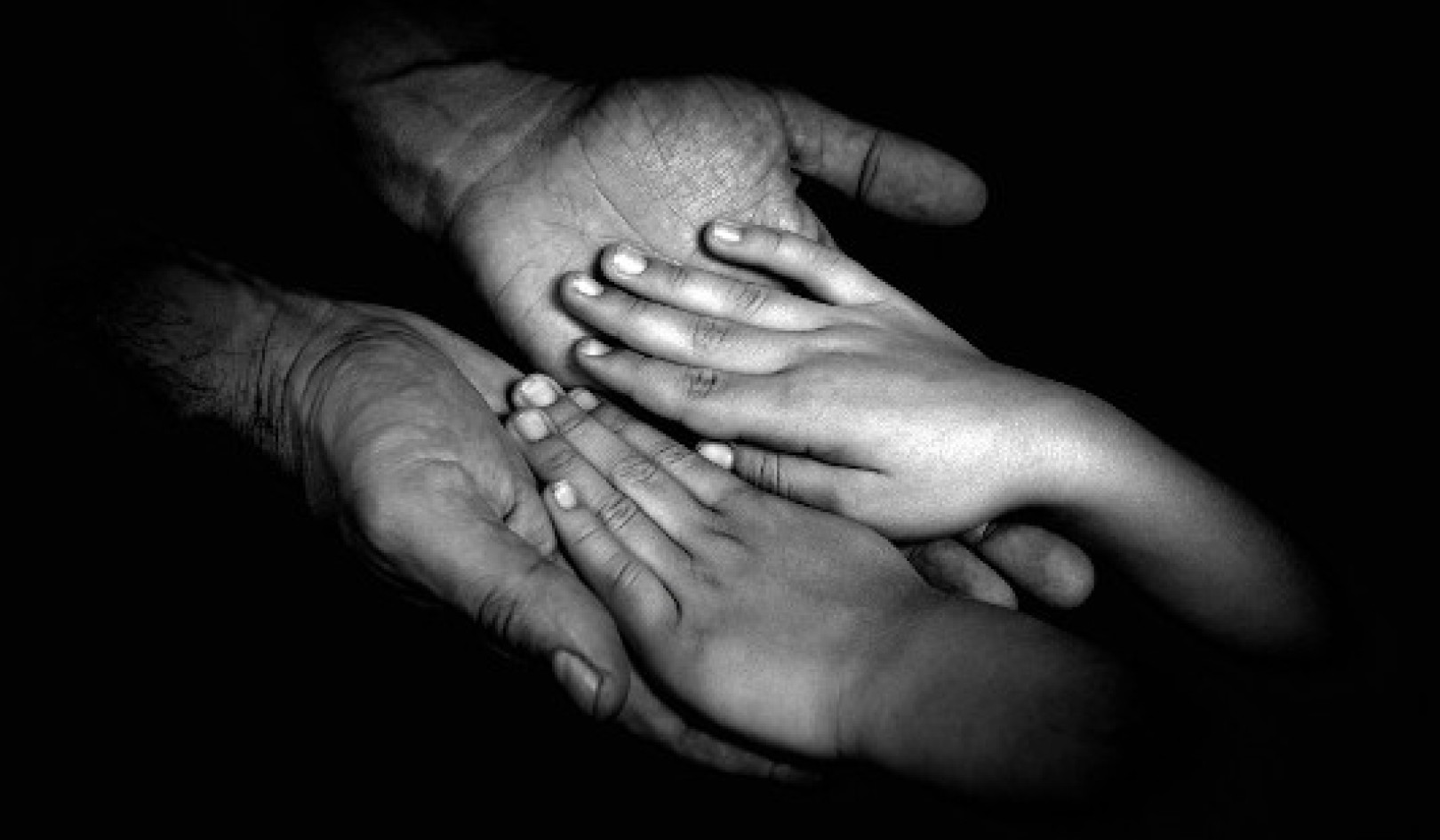Bill of Rights
* Your body is yours to respect and protect.
* You can prevent HIV and other STDs.
* You have the right to be safe from these diseases and stay healthy.
* You have the right to say "no" to anything that is not safe for you.
For example, you have the right to say no to sex, or other risky behaviors such as physical fighting or using alcohol or other drugs. You don't have to do anything with your body that doesn't feel safe to you, no matter whom you're with, whether you've done it before, or what you agreed to earlier. If you choose to say "no" you don't need to justify yourself; it doesn't have to be "I don't want to because..." "I don't want to!" is enough.
* You also have the responsibility to protect other people. This means that it is not OK to put someone else in danger. You have the responsibility to communicate about whatever risks might exist. It is important to respect other people's right to say "no" to you even if you feel safe.
* If you choose to take risks, make your behavior as safe as possible -- emotionally and physically.
Emotional safety can exist when both people make the decision to engage in a certain behavior together and can say no if they want to. If you feel as if you couldn't say "no" or that your "no" wouldn't be respected, then you're not in an emotionally safe situation. The use of alcohol and other drugs can seriously affect a person's ability to make emotionally and physically safe decisions.
Physical safety is also based on trust, respect, and communication. In terms of sexual risks, the safest choice you can make is to wait to have sex until you are in a risk-free relationship.
Safe sex can exist, but only in a risk-free, faithful relationship where both partners get tested, know they don't have HIV or other STDs, and have no other risky behaviors.
However, if you choose to have sex before you're in a risk-free relationship, you should know that you are taking a risk. You need to protect yourself and your partner by using barriers, such as condoms. Using barriers during sex is called safer sex. Safer sex is not "safe" because the barriers do not provide 100% protection.
* Physical safety is also important in other risky situations such as needle sharing for injecting drugs, body piercing, or tattooing. From a health perspective, the safest choice is not to use drugs at all and never to share needles.
* You are a valuable person and an important part of your community.
* Sometimes people are forced to do things that are dangerous. It is not your fault that someone makes you do something that does not feel safe to you. If something unsafe happens, you always have the right to talk about it, be respected, and get help. Find an adult you can trust and tell him/her what happened.
* You deserve to be treated with respect.
* You have the right and the responsibility to protect yourself and other people against HIV and other STDs.
HIV, AIDS & STD Statistics
* The World Health Organization estimates that 36.1 million adults and children were living with HIV infection and AIDS as of 1999.
UNAIDS/WHO, AIDS epidemic update: December 2000. 2000, UNAIDS/WHO: Geneva, Switzerland.
* The estimated annual incidence of curable STDs (not including AIDS and other viral STDs) is 333 million cases worldwide.
WHO Initiative on HIV/AIDS and Sexually Transmitted Infections (HSI), Sexually Transmitted Diseases (STDs) - Fact Sheet (April 1996).
* As of June 2000, The Centers for Disease Control and Prevention reported that 431,924 individuals are living with HIV infection and AIDS in the United States.
Centers for Disease Control and Prevention, HIV/AIDS Surveillance Report (2000). 12(1).
* There are an estimated 250,000 Americans who are unaware that they are HIV-infected, and many of them are young people.
Office of National AIDS Policy, Youth and HIV/AIDS 2000: A New American Agenda (2000).
* In the United States, half of all new HIV infections are thought to occur in young people under 25 years of age.
Office of National AIDS Policy, Youth and HIV/AIDS 2000: A New American Agenda (2000).
* More than 123,000 young adults in the United States have developed AIDS in their twenties. The delay between HIV infection and the onset of AIDS means that most of these young people were infected with HIV as teenagers.
Office of National AIDS Policy, Youth and HIV/AIDS 2000: A New American Agenda (2000).
* Although, the total number of youth in the United States who have been infected with HIV is unknown, public health officials believe that 20,000 people between 13 and 24 years of age are infected with HIV every year -- at the rate of about 2 every hour.
Office of National AIDS Policy, Youth and HIV/AIDS 2000: A New American Agenda (2000).
* In the United States, more females than males are now being diagnosed with HIV in the 13-19 year old age group.
Office of National AIDS Policy, Youth and HIV/AIDS 2000: A New American Agenda (2000).
* By 12th grade, 65% of American youth are sexually active, and one in five has had four or more sexual partners.
Office of National AIDS Policy, Youth and HIV/AIDS 2000: A New American Agenda (2000).
* In the United States, 25% of high school students who have had sex said they were under the influence of alcohol and other drugs the last time they had sex.
Office of National AIDS Policy, Youth and HIV/AIDS 2000: A New American Agenda (2000).
* HIV infection is usually contracted sexually among American young people.
Office of National AIDS Policy, Youth and HIV/AIDS 2000: A New American Agenda (2000).
* The percentage of high school students who say they have had sexual intercourse decreased from 54% in 1991 to 50% in 1999. The percentage of sexually active high school students who say they used a condom the last time they had sex increased from 46% to 58% during the same period. Their accounts were confirmed when, in 1999, births to teenagers fell to their lowest rate in 60 years.
Office of National AIDS Policy, Youth and HIV/AIDS 2000: A New American Agenda (2000)
* About one in 50 juniors and seniors in American high schools admitted injecting illegal drugs.
Office of National AIDS Policy, Youth and HIV/AIDS 2000: A New American Agenda (2000).
* Each year, three million adolescents in the United States contract sexually transmitted diseases (STDs). That's about 1 in 4 sexually experienced teens. Of the 12 million Americans with STDs, about two-thirds are young people under the age of 25.
Office of National AIDS Policy, Youth and HIVIAIDS 2000: A New American Agenda (2000).
* Sexually transmitted diseases affect people in both developing and industrialized countries. Those aged 20-24 are at highest risk of infection. STDs have important repercussions on reproductive health and have been shown to increase the risk of infection with the AIDS virus. This is particularly serious as in many cases STDs are asymptomatic in both sexes, particularly in women.
WHO Initiative on HIV/AIDS and Sexually Transmitted Infections (HSI), Sexually Transmitted Diseases (STDs) - Fact Sheet (April 1996).
* Data from the 1997 Youth Risk Behavior Survey-Middle School show that:
13% of students reported ever having had sexual intercourse (10% of sixth graders, 13% of seventh graders, and 17% of eighth graders).
46% of sexually active students reported having had sexual intercourse with three or more partners (44% of sixth graders, 43% of seventh graders, and 46% of eighth graders).
62% of sexually active students reported using a condom at last sexual intercourse (61% of sixth graders, 58% of seventh graders, and 66% of eighth graders).
25% of sexually active students reported having had a sexually transmitted disease (33% of sixth graders, 23% of seventh graders, and 20% of eighth graders).
31% of sexually active students reported drinking alcohol or using drugs before last sexual intercourse (26% of sixth graders, 38% of seventh graders, and 28% of eighth graders).
50% of students reported ever drinking alcohol (34% of sixth graders, 55% of seventh graders, and 61% of eighth graders).
18% of students reported ever smoking marijuana (9% of sixth graders, 19% of seventh graders, and 25% of eighth graders).
15% of students reported sniffing glue or other inhalants (15% of sixth graders, 18% of seventh graders, and 13% of eighth graders).
J. V Fetro, et al.,"Health-Risk Behaviors among Middle School Students in a Large Majority-Minority School District, " Journal of School Health, 71 (1): 30-7.
* Preventative measures have resulted in highly significant decreases in perinatal HIV transmission (HIV transmission from an infected mother to her child during pregnancy, delivery or breastfeeding) in the United States since the mid-1990s.
CDC-NCHSTP, Status of Perinatal HIV Prevention in the U.S. Declines Continue: Hope for Extending Success to Developing World, CDC-NCHSTP-Division of HIV/AIDS Prevention: (1998).
* Each year, between 40,000 and 80,000 Americans become infected with HIV.
Office of National AIDS Policy, Youth & HIV/AIDS: An American Agenda, A Report to the President. National AIDS Fund (1996).
 This article is excerpted from:
This article is excerpted from:
Everybody: Preventing HIV and Other Sexually Transmitted Diseases Among Young Teens, ©2000, 2001,
by RAD Education Programs.
Reprinted with permission of the publisher, RAD Education Programs. www.preventaids.net
Info/Order this book.
About the Author
 Deborah R. Shoeberlein is Founder and Executive Director of Redefining Actions & Decision Educational Programs, a nonprofit organization that designs, implements, and researches innovative, multi-modal, interactive HIV education models. Deborah is currently interim editor of the American School Health Association's upcoming practitioners' publication "Health in Action." She also serves as Project Consultant on a cooperative agreement between National Middle School Association and the Division of Adolescent and School Health at the Centers for Disease Control in Atlanta, Georgia, to disseminate the RAD curriculum EveryBody(TM). Visit her website at www.preventaids.net
Deborah R. Shoeberlein is Founder and Executive Director of Redefining Actions & Decision Educational Programs, a nonprofit organization that designs, implements, and researches innovative, multi-modal, interactive HIV education models. Deborah is currently interim editor of the American School Health Association's upcoming practitioners' publication "Health in Action." She also serves as Project Consultant on a cooperative agreement between National Middle School Association and the Division of Adolescent and School Health at the Centers for Disease Control in Atlanta, Georgia, to disseminate the RAD curriculum EveryBody(TM). Visit her website at www.preventaids.net























